Scientists Discover a New Signaling Pathway and Design a Novel Drug for Liver Fibrosis
Health & Behavior
By:
Published Date
By:
Share This:
UC San Diego researchers explore seaweed genome diversity in first-of-its-kind project
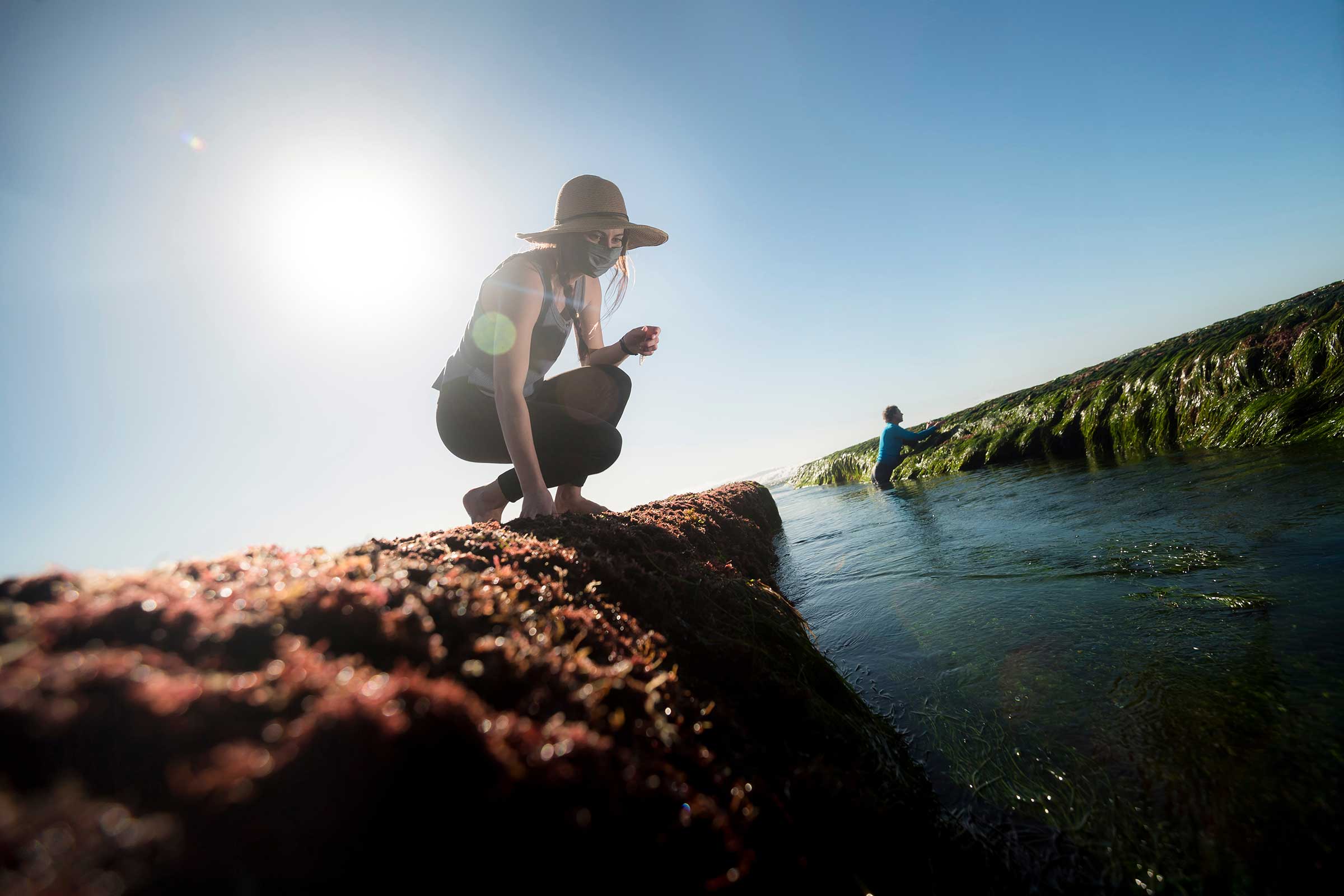
UC San Diego Ph.D. student Taylor Steele and advisor Bradley Moore (shown in the background) collect seaweed at the tide pools in La Jolla. They are working on a project to sequence the genomes of 10 different types of biosynthetically “gifted" red seaweeds found in San Diego. Photos by Erik Jepsen/UC San Diego Communications.
San Diego’s tide pools are a popular site for visitors hoping to see some form of marine life. Revealed with the ebb and flow of the tides, these rocky coastal wonderlands are often teeming with creatures ranging from hermit crabs and octopus to small fishes and sea anemones.
But beyond the scene-stealing marine critters—if you look a little closer—you will find seaweed, or algae, and lots of it.
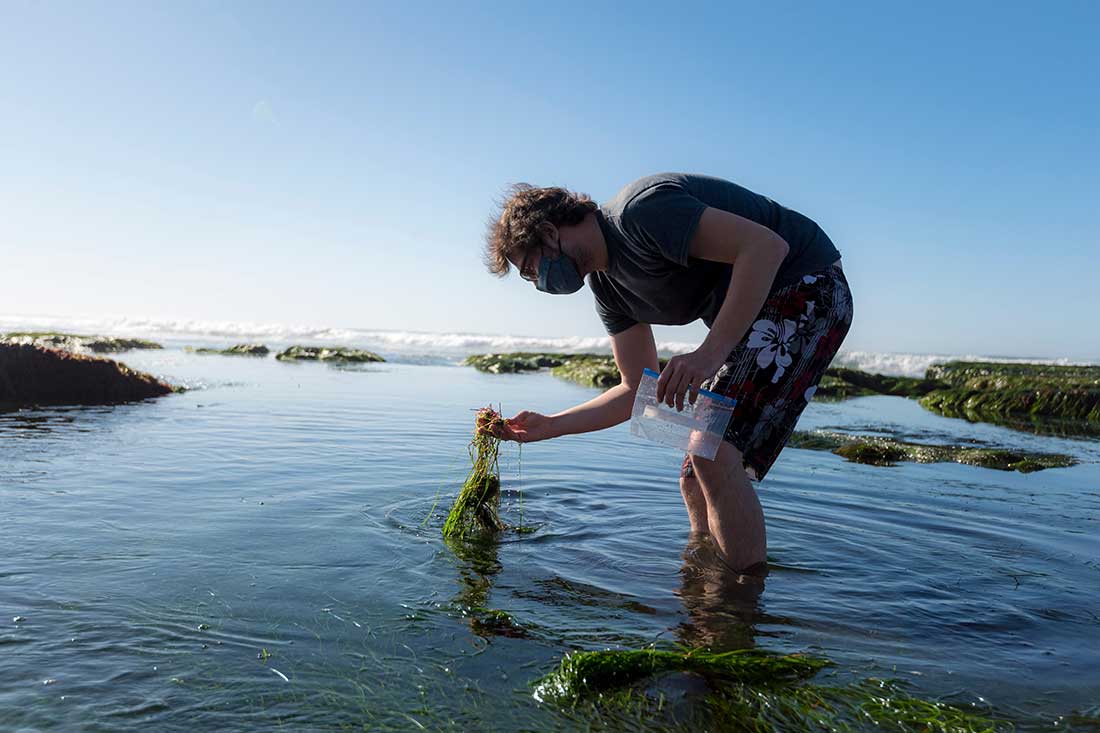
Scripps Oceanography postdoctoral scholar Immo Burkhardt sifts through seagrass in search of red seaweed.
Researchers at UC San Diego are now taking a closer look at some of these locally found seaweeds in a first-of-its-kind project that explores seaweed genome diversity. Funded by the Joint Genome Institute (JGI), this research is led by marine chemist Bradley Moore and members of his lab at Scripps Institution of Oceanography.
Since the project began in 2019, researchers in the Moore Lab have been working to unravel the complex chemistry of seaweeds, particularly how they construct certain molecules that could have important applications in fields such as manufacturing and medicine. The team is currently working with the JGI to sequence the genomes of 10 different types of biosynthetically “gifted" red seaweeds found in San Diego, something that has never been done before.
“I'm excited to read some of the first genome sequences from red algae to learn how these seaweeds have evolved to chemically defend themselves from nearshore grazers,” said Moore, a professor of marine biotechnology and biomedicine at Scripps Oceanography and the Skaggs School of Pharmacy at UC San Diego. “Many chemicals naturally produced by our local seaweeds are unique to red algae and are not found in other organisms on our planet. So that fascinates me as a chemist and geneticist with the additional goal to apply the metabolic secrets of seaweeds to help solve societal challenges.”
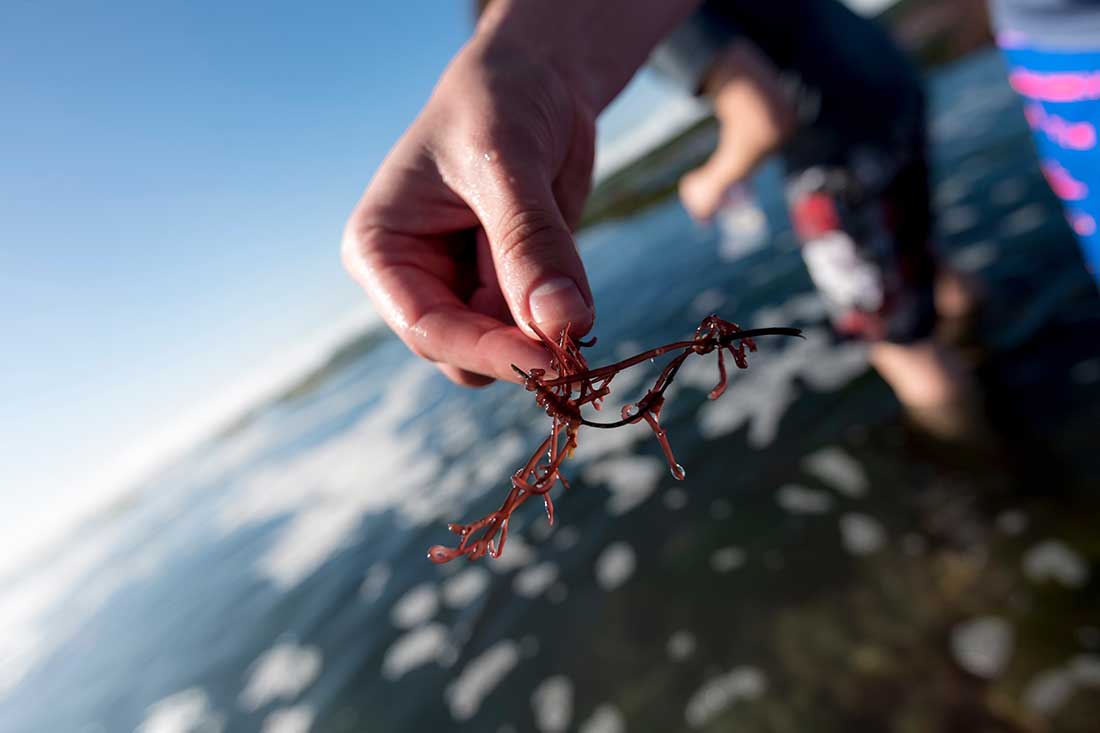
Some red seaweeds construct molecules that could have important applications in fields such as manufacturing and medicine.
Seaweeds represent a multi-billion-dollar industry across the world and are a source of many materials spanning the chemical and food sectors. By understanding how seaweeds work on a molecular level, this work could help natural products researchers harness seaweeds' biosynthetic machinery in the biomanufacturing of fuels, lubricants, polymers, and other commodity and specialty chemicals.
“As our economy moves to more of a bio-based future less reliant on fossil fuels, we scientists are looking to nature to learn how they make many of the same materials that we need in society, yet not from petrochemicals but via photosynthesis,” said Moore. “So, I see lots of upsides here in making bio-based materials, pharmaceuticals, agriculture products, and more to support our growing economy.”
This project builds upon groundbreaking work done in the 1970s by Scripps Oceanography scientists William Fenical and the late D. John Faulkner. The marine chemists collected and characterized red seaweeds for the first time, identifying interesting chemicals in the seaweed samples by grinding them up and extracting the chemicals out of them. The Moore Lab is now revisiting this initial work with fresh eyes and taking it a step further using genome sequencing, a process which tells scientists the kind of genetic information that is carried in a particular DNA segment.
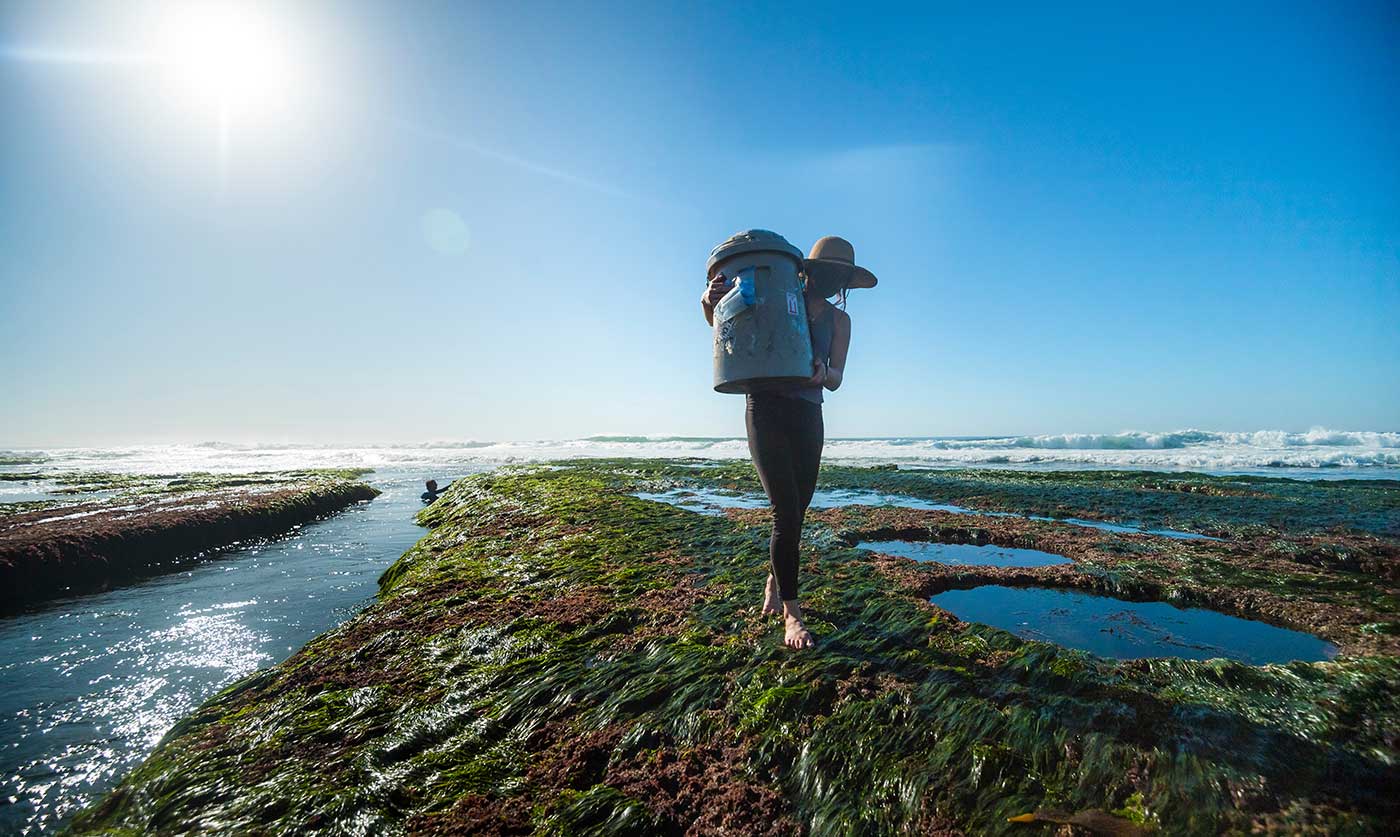
Ph.D. student Taylor Steele carries a vat of liquid nitrogen, used to preserve samples, to the tide pools.
Red seaweeds are of interest to marine chemists because certain types are known for their incredible ability to utilize halogens, a group of non-metallic elements that includes bromine and chlorine. The main focus of this genome sequencing project is to discover how some “chemically interesting” seaweeds are able to incorporate halogens onto the molecules that they produce—molecules that hold promise for other applications.
“The seaweeds we study are talented producers of an interesting suite of bioactive molecules,” said Taylor Steele, a member of the Moore Lab and third-year Ph.D. student in the Department of Chemistry and Biochemistry at UC San Diego. “We’re interested in the biochemistry of these seaweeds, and how we are able to re-purpose this biosynthetic machinery for other biotechnological applications. It's almost like molecular Legos.”
Growing up in San Diego, Steele said she was an “outdoorsy kid” interested in learning about the natural world. This curiosity inspired her to pursue studies in science, “to understand the amazing underlying biochemistry going on all around you—it just can't be seen with your naked eye,” she said.
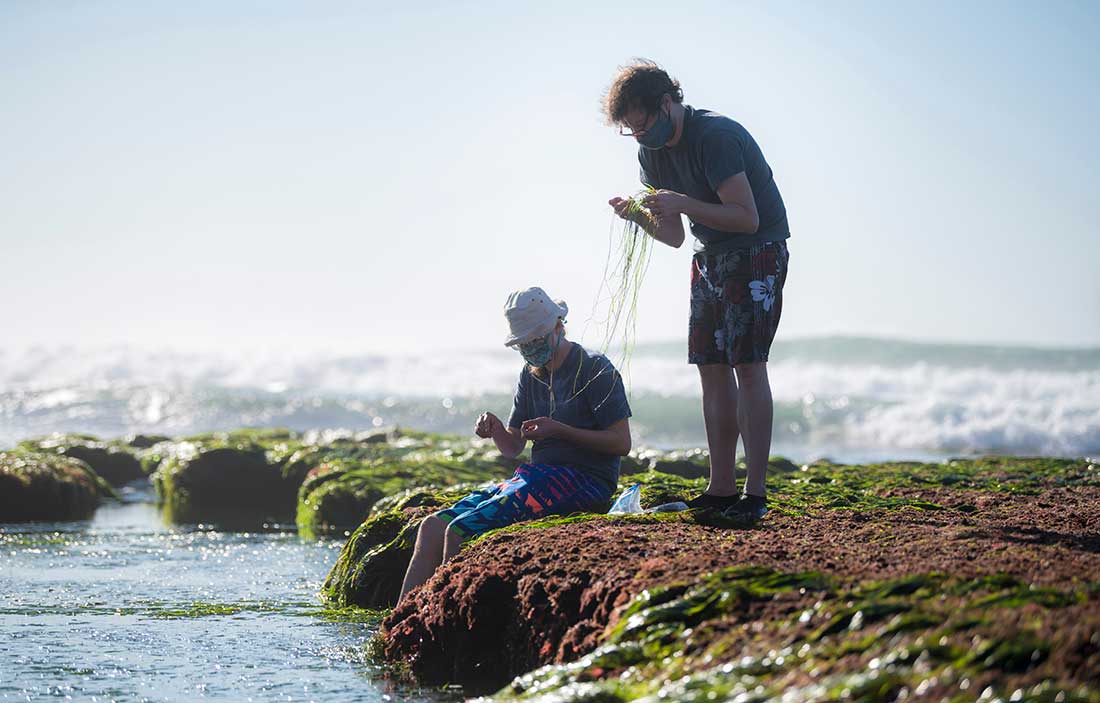
Moore Lab members Tristan de Rond and Immo Burkhardt search for red seaweeds at the tide pools.
Steele joined the Moore Lab in 2019 after learning about some of the innovative sequencing techniques being utilized there, plus she was encouraged by Moore’s mentorship and how he fosters a healthy lab environment. She decided to focus her Ph.D. research on the seaweed genome project, working in collaboration with Scripps postdoctoral scholar Immo Burkhardt. The research seemed to perfectly combine her interests in biochemistry and genome sequencing.
"I was excited to have a project with both computational and wet lab components. The Moore lab is focused on connecting genes to molecules, and the seaweed genome project is a great example of this philosophy,” said Steele. “I have an opportunity to do the genome sequencing, assembly, and annotation, and then take my results to the bench and also do the biochemistry."
During a recent field outing, Steele, Moore, and several other lab members collected seaweed samples from the tide pools in La Jolla. They timed their socially distanced outing to coincide with the low tide, which provided a short window of time for the team to search the nooks and crannies of the exposed tide pools for three particular seaweed species.
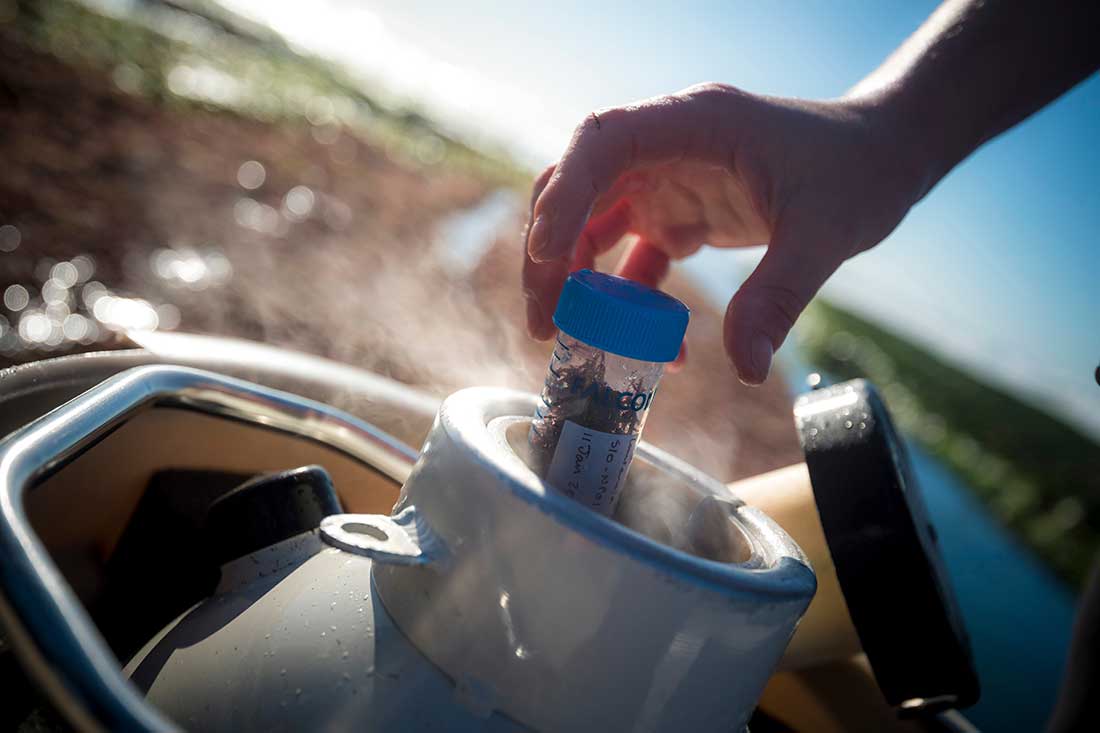
Samples intended for long-read sequencing were frozen in a vat of liquid nitrogen before being sent to the lab for PacBio sequencing.
Once the researchers found a viable sample, they would clean it by picking off any “large friends” like worms or molluscs, and then prepare the sample to be sent to the JGI for genome sequencing.
Steele said the researchers will first use short-read sequencing, known as Illumina sequencing, to get a feel for what a sample looks like, and then once it has been cleared as viable, they will follow up with the more precise long-read sequencing, known as PacBio sequencing. She compares the different sequencing methods to reading a book.
“With Illumina sequencing, it is like you are sequencing each word individually, and with PacBio sequencing, it is like you are reading through entire paragraphs at a time without stopping, which enables you to have a much more complete and contiguous genome,” said Steele. “That is a really valuable tool for the community and for us—the people who are hunting for genes.”
It usually takes three to six months to receive the sequencing results from the JGI, and then the results are further analyzed in the lab at Scripps. In addition to the possible biomanufacturing applications, researchers say that the resulting genomes will provide new insight into how seaweeds adapt to diverse and inhospitable environments.
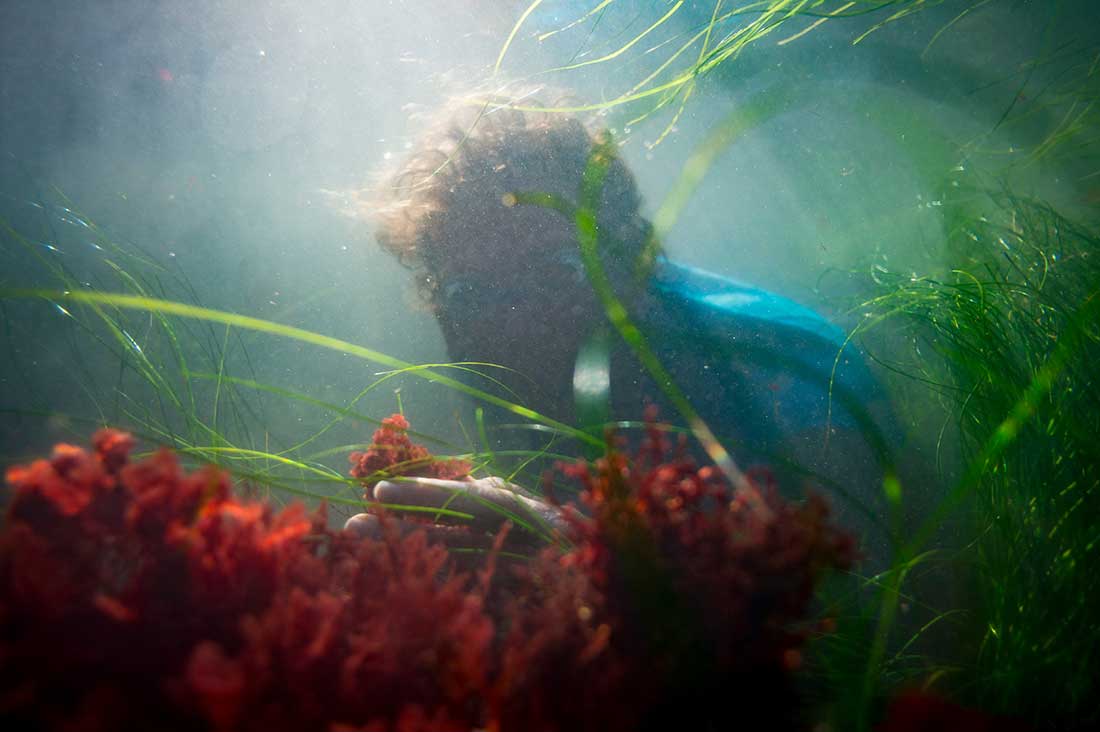
Perks of the job: Scripps Oceanography scientist Bradley Moore searches for seaweed underwater.
Tristan de Rond, a Scripps postdoctoral scholar and member of the Moore Lab, said he is impressed by the complexity of red seaweeds and their ability to thrive in unlikely places. “They are these fascinating little chemical factories found between the cracks of the rocks,” he said.
Having studied seaweeds for the past three years, Steele said she also has more of an appreciation for the “amazing amount of biodiversity” found in the tide pools.
“There are so many of these red seaweeds in our backyard that you just don't notice until you begin to learn about them. Then you realize, holy cow, there are so many different kinds of these seaweeds out here and they make these crazy molecules,” she said.
Across campus, other researchers are also working on innovative projects involving seaweeds. Scripps marine ecologist Jennifer Smith has been working with agricultural researchers at UC Davis on a project to cultivate Asparagopsis taxiformis, a red seaweed that has been shown to reduce the amount of methane emissions from dairy cows when added to livestock feed. Smith also co-leads the California Seaweed Company, a start-up with former student Brant Chlebowski that seeks to sustainably cultivate top quality culinary seaweeds. And several other UC San Diego researchers have been collaborating on a project that utilizes algae-based materials to create biodegradable flip-flops.
So far, Steele has made progress on sequencing three types of red seaweeds, with two more in the pipeline, and five others to be done in the near future with help from others in the lab. The project will be completed in 2022, but Steele said it will hopefully leave a “pile of genomes” that will enable future research.
“We are in a genomics era, and it has been fun to apply this technology to red seaweeds, a very understudied group of organisms,” said Steele. “My hope is that we can contribute these genomes to the community as a resource for future work.”
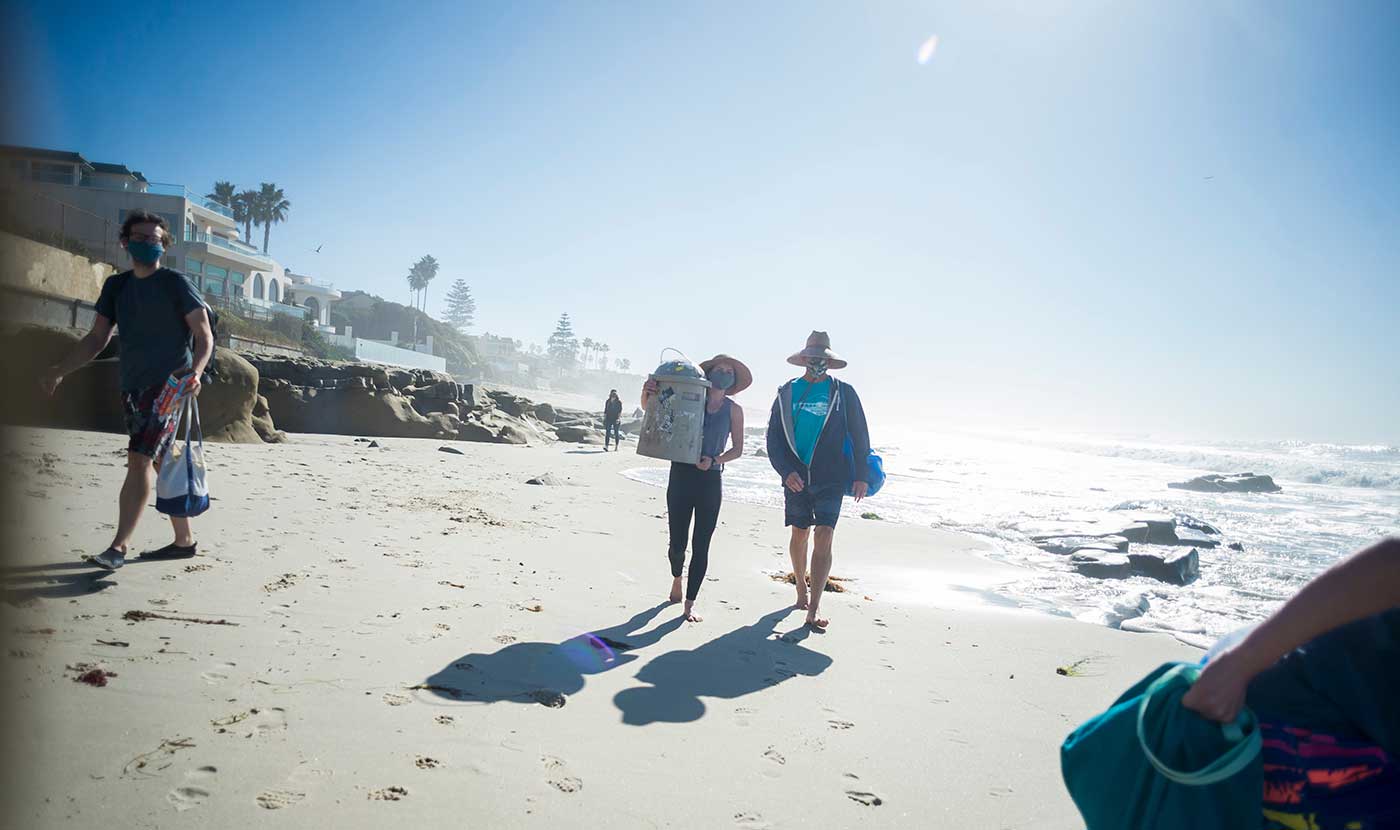
Taylor Steele, Bradley Moore and other members of the Moore Lab walk along the beach during a field trip to collect seaweed in January 2021.
Share This:
Keep up with all the latest from UC San Diego. Subscribe to the newsletter today.